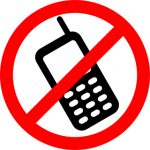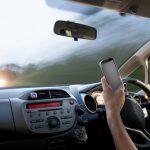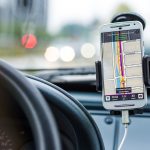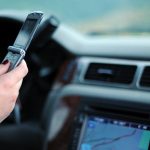Mobile Phone Use While Driving – Statistics, Research and the Law
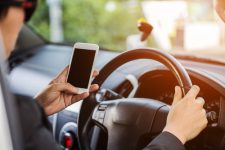
Using our mobile phones use has become so integrated into our lives, we may not even know how often we’re using them.
We use our phones to email, check bank balances, pay bills, listen to music, take notes, scroll social media, text and talk to each other.
But touching a mobile phone while driving is illegal. And according to new research, most drivers are aware of the rules but them anyway.
Statistics suggest that last year, 900 P-plater drivers were for using a mobile phone while driving in the last year, compared with more than 38,000 fully licensed drivers.
To the surprise of many, NSW police claim the worst offenders were older drivers.
Police operation
One morning earlier this year during peak hour on Sydney’s M5 motorway, six officers from the New South Wales Traffic and Highway Patrol set up an operation to target drivers using mobile phones illegally.
One officer, armed with a camera and long lens, took photos of drivers holding their phones to call or text, while a colleague recorded the number plates. Other officers on motorbikes gave chase, pulled over the drivers and issued fines.
According to police, anyone who pleaded: “I didn’t do it” would be shown photographic evidence to the contrary.
These types of police operations have been on the rise in NSW for the past few years.
Texting while driving increases risk of crash
In NSW, the law allows fully licensed drivers to talk on a phone ‘hands-free’ – which means where the phone is mounted on an approved fixed cradle or where hands-free technology such as Blue-Tooth is used, but many people can’t resist text messaging, and this is where the danger lies.
Research suggests that if you text while driving, your risk of a collision during the act increases 23-fold – simply because you’ve taken your eyes (and your mind) off the road for too long.
National issue
The Western Australian government says it was so plagued by motorists texting behind the wheel that it trialled road side ‘texting bays’ earlier this year, where drivers are able to pull over and text safely.
And recent surveys in Queensland suggest that many drivers pick up their phone and look at it while driving at least twice hourly. Many respondents acknowledged that texting while driving is risky, but failed to identify the risk of other acts such as answering the phone or looking at the phone’s screen.
Nearly 70 per cent admitted to learning how to cover a mobile with their hands to avoid police detection.
In an effort to get the message across to Victorian motorists, the state’s Transport Accident Commission recently hired an Academy Award-winning filmmaker to expose the reality of mobile phone use.
The documentary involved cameras being installed into the cars of five young people (with their permission) over a ten-day period. Each considered themselves a good driver who obeyed the road rules, but the results told a different story.
All drivers repeatedly looked down at their phones, text messages, and one even took selfies while driving. The Victorian Government hopes the film will begin to get the message across.
The documentary reports that a recent online survey of 505 drivers between the ages of 18 and 30, found that more than half said they would check their phone immediately if they got a text, even while driving.
And 49 per cent of respondents admitted to using their phone while driving — which is nearly twice as many who admitted using their phone on a date.
New South Wales
Here in NSW, authorities continue to fight the issue of mobile use while driving with hefty fines and loss of demerit points, so it’s important to know the law.
It is against the law to handle a mobile phone while you’re driving, and it has been for several years.
Laws differ across Australia, but the general rule is that you can only use your phone while driving if it is secured in a legally mounted cradle and is completely ‘hands-free’.
You are not permitted to:
- Hold a phone between your shoulder and your ear, even while keeping your hands on the steering wheel,
- Have a phone in your lap or your leg, and talk with the speaker function on, or
- Touch a phone while you are stopped at an intersection or traffic lights.
Regardless of whether you are using the phone to talk, stream music through your audio system, get map directions, receive speed information or live traffic updates, you cannot touch a phone under any circumstances (unless it is legally mounted), other than to hand it over to a passenger.
All other functions such as texting, Facebook, Twitter, email, chat etc, are strictly prohibited for all drivers.
The penalty is a $319 fine and four demerit points. The demerit point losses are doubled during holiday seasons.
Learner Drivers (L-Plates) and Provisional Drivers (P-Plates) are completely prohibited from using phones while driving.
Going to court for a traffic offence?
If you are going to court for a traffic offence, call or email Sydney Criminal Lawyers anytime to arrange a free first consultation with an experienced, specialist traffic lawyer who will accurately advise you of your options, the best way forward, and fight for the optimal outcome in your specific situation.



